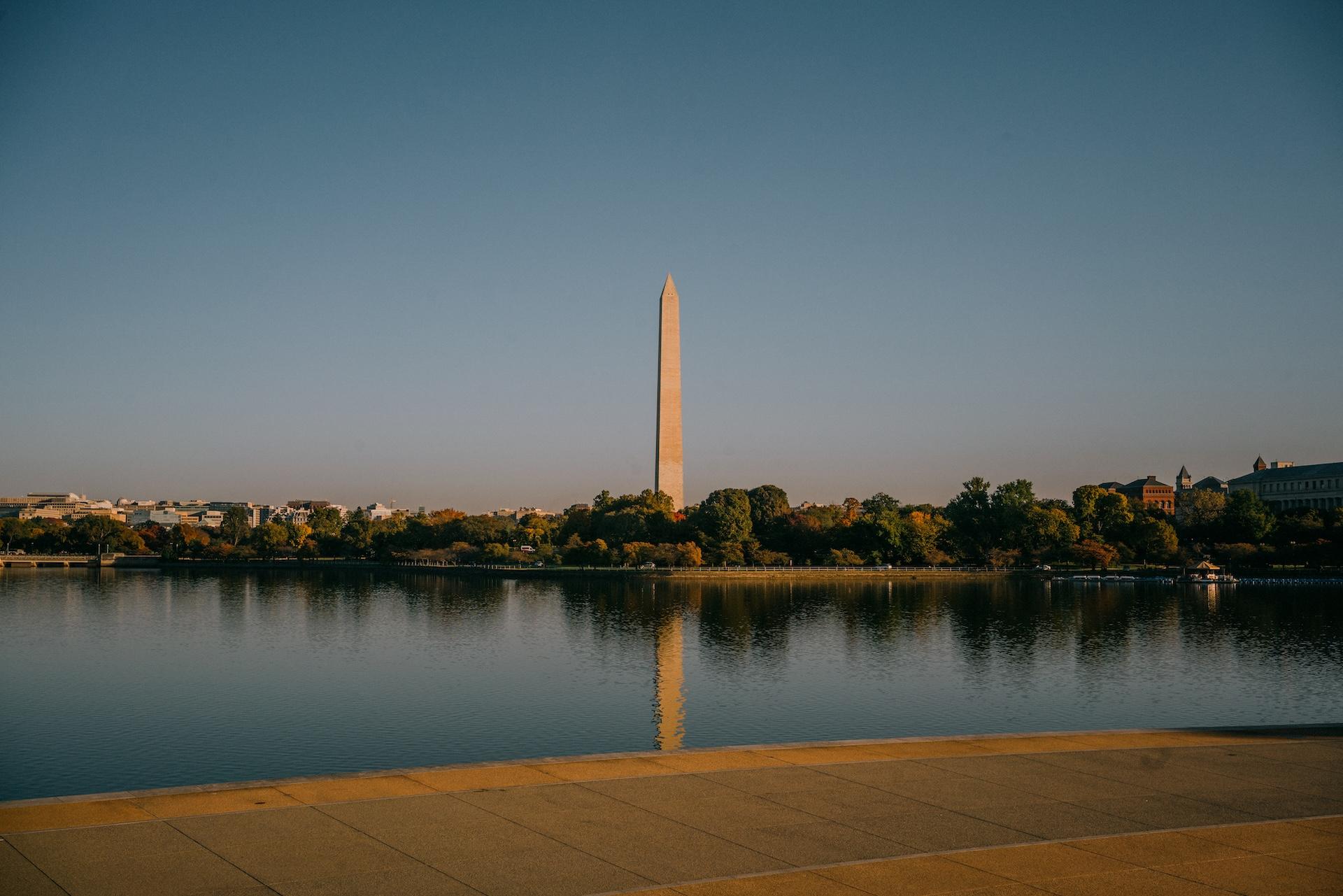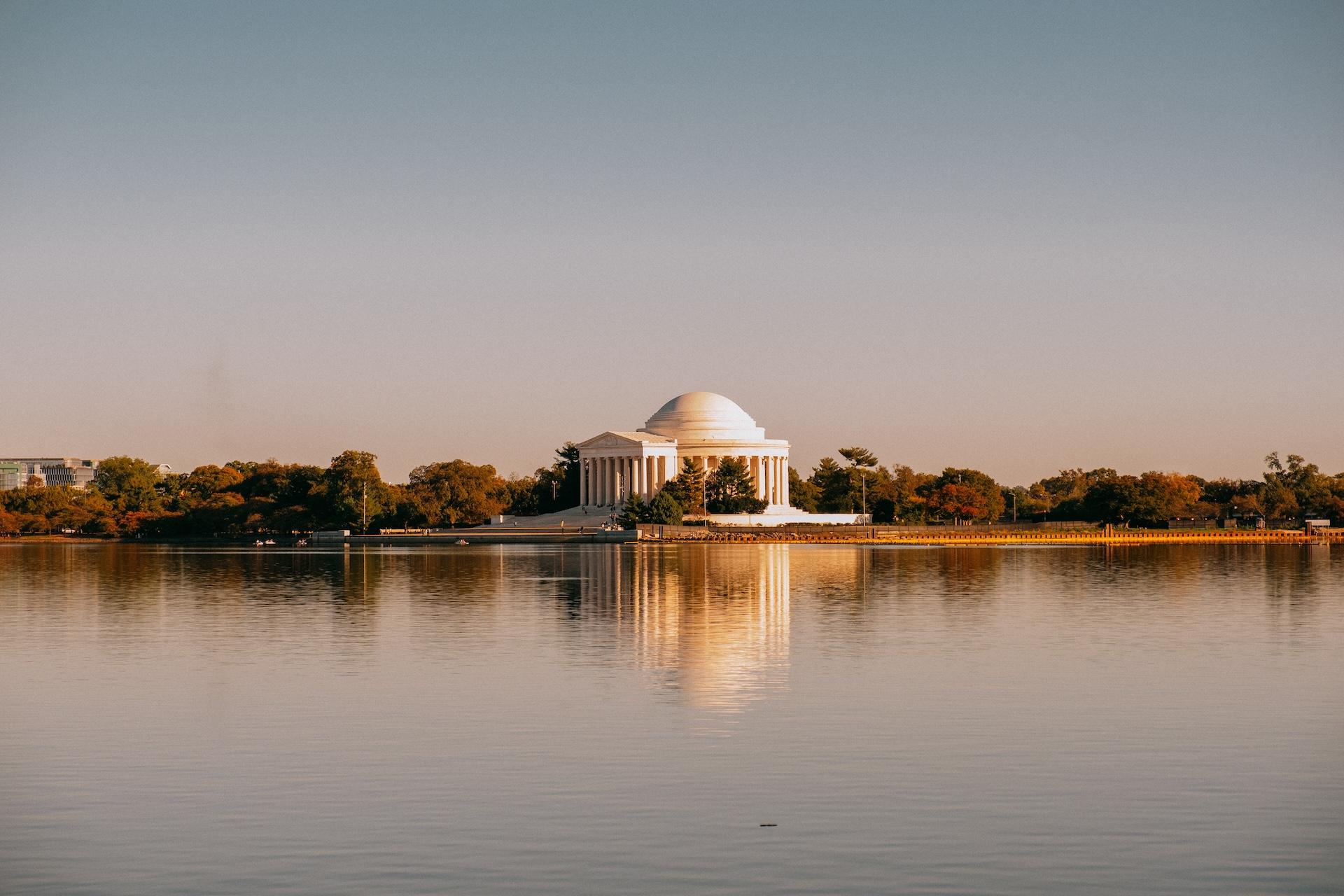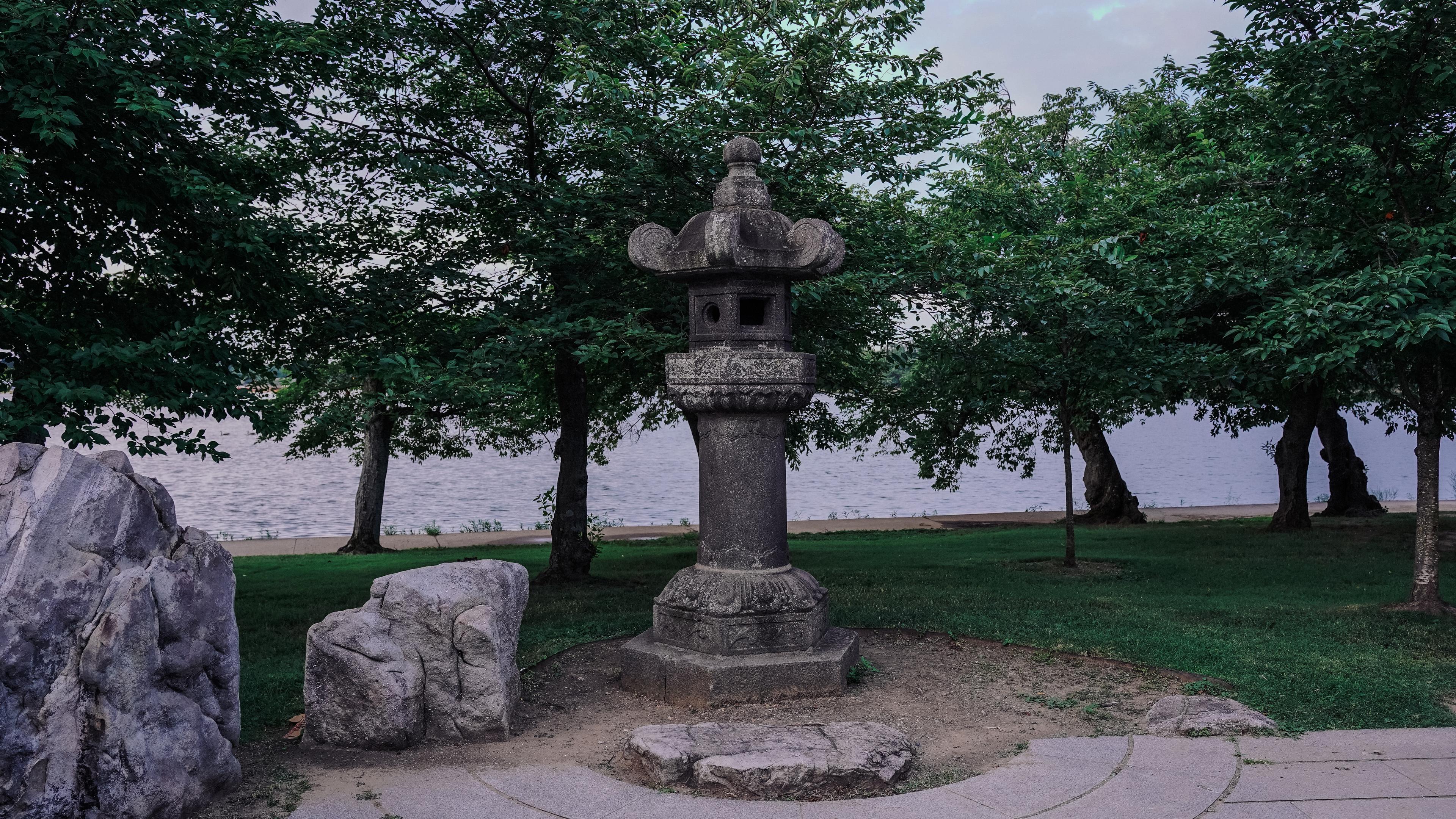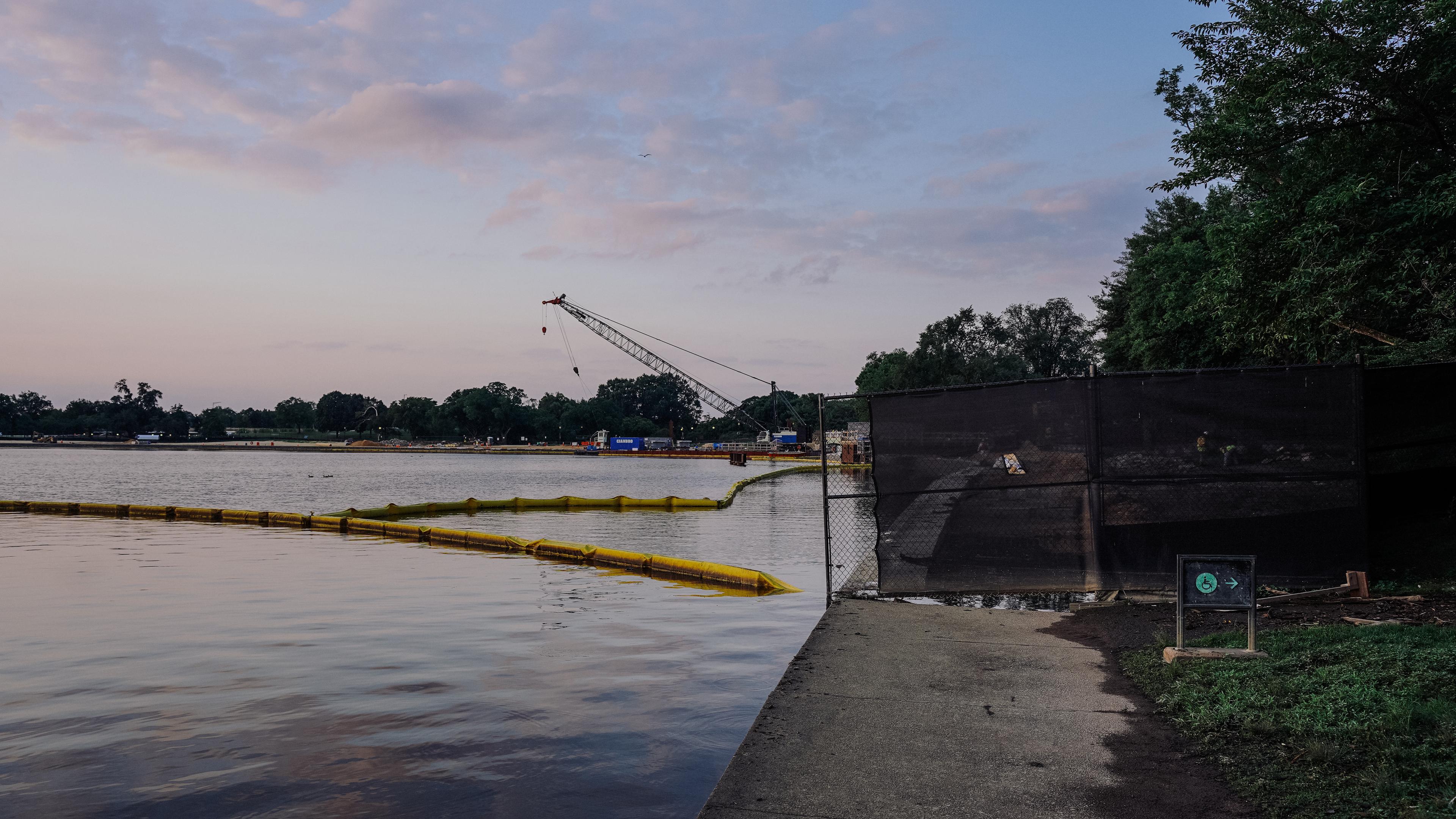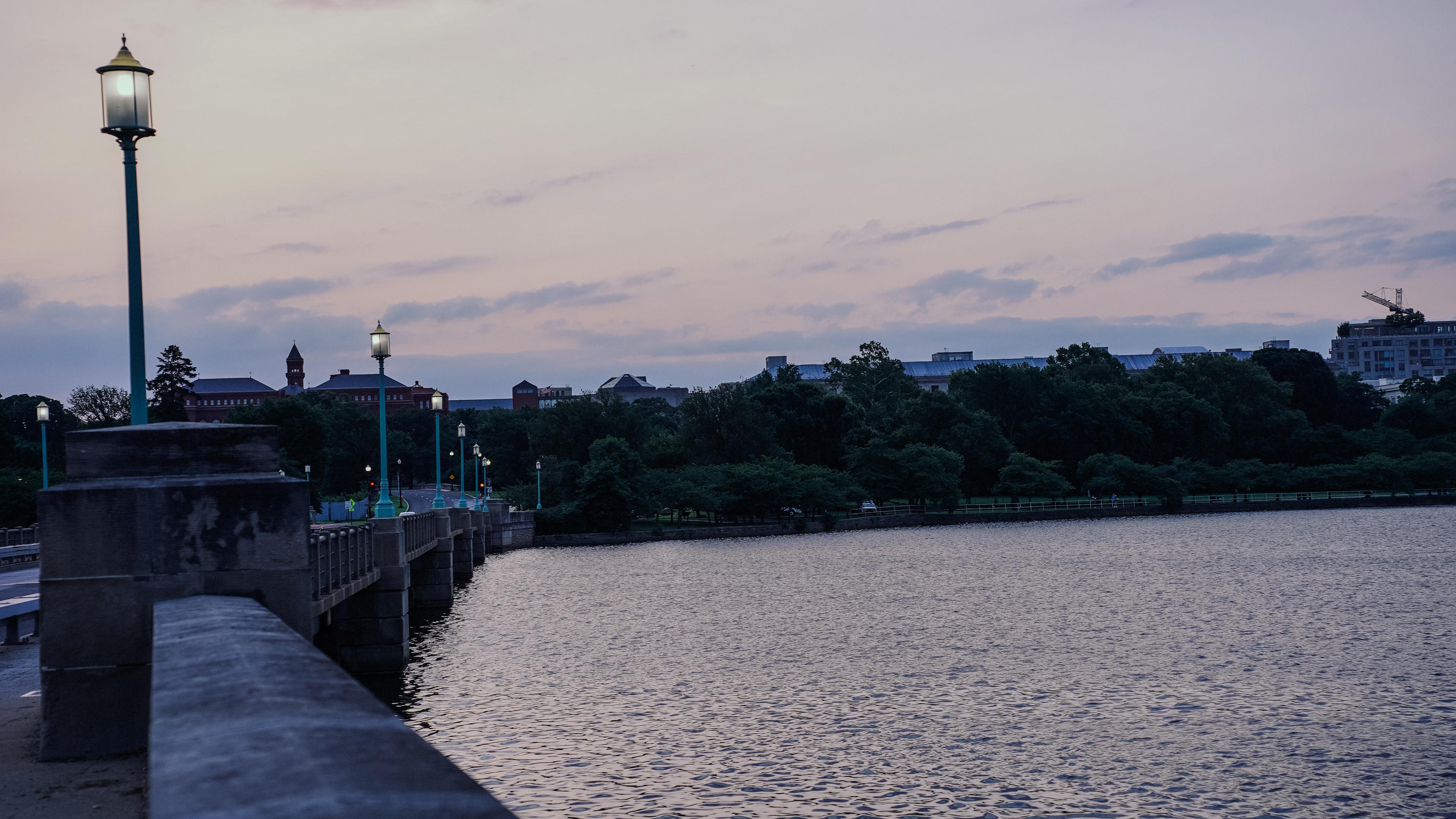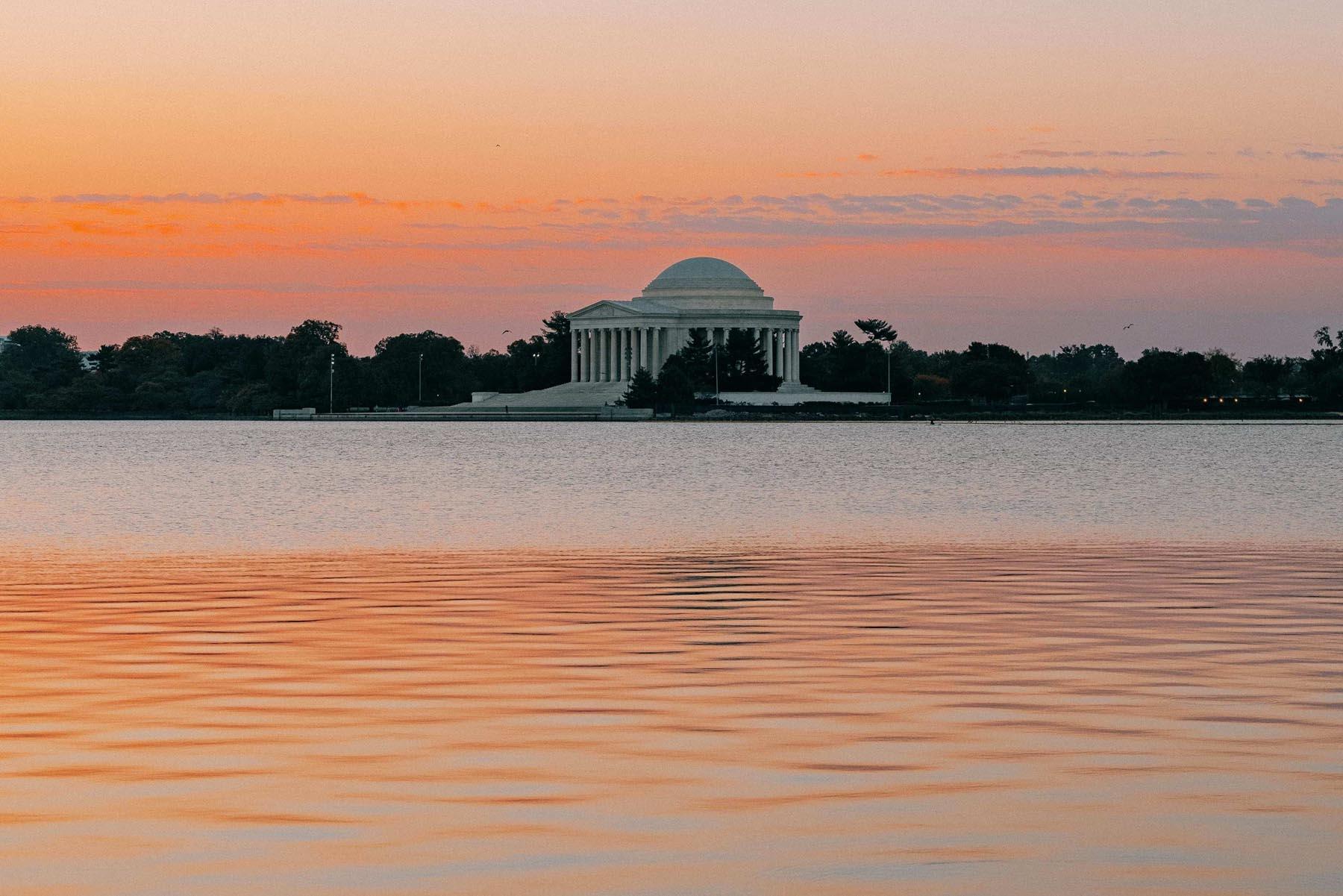
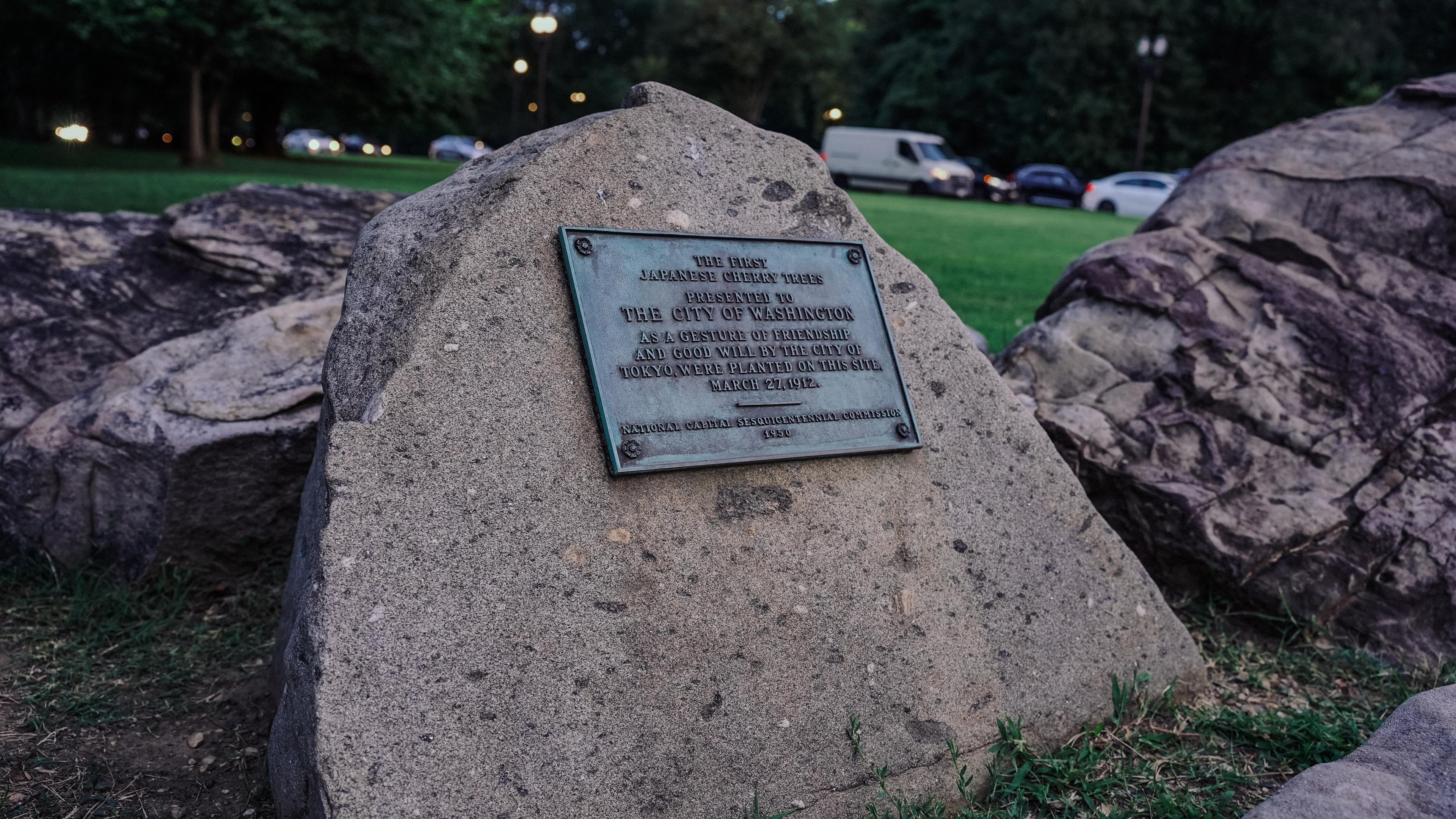
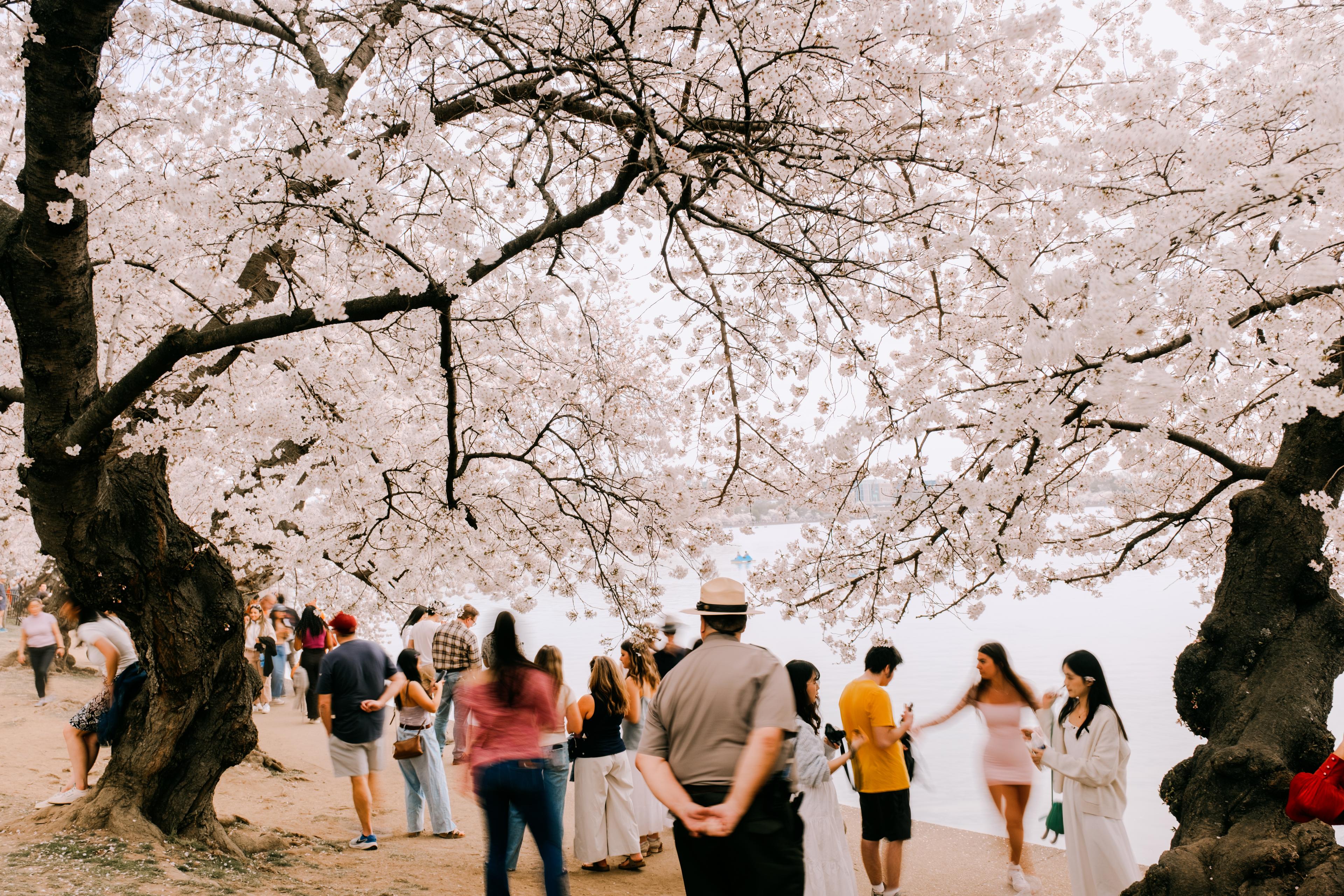
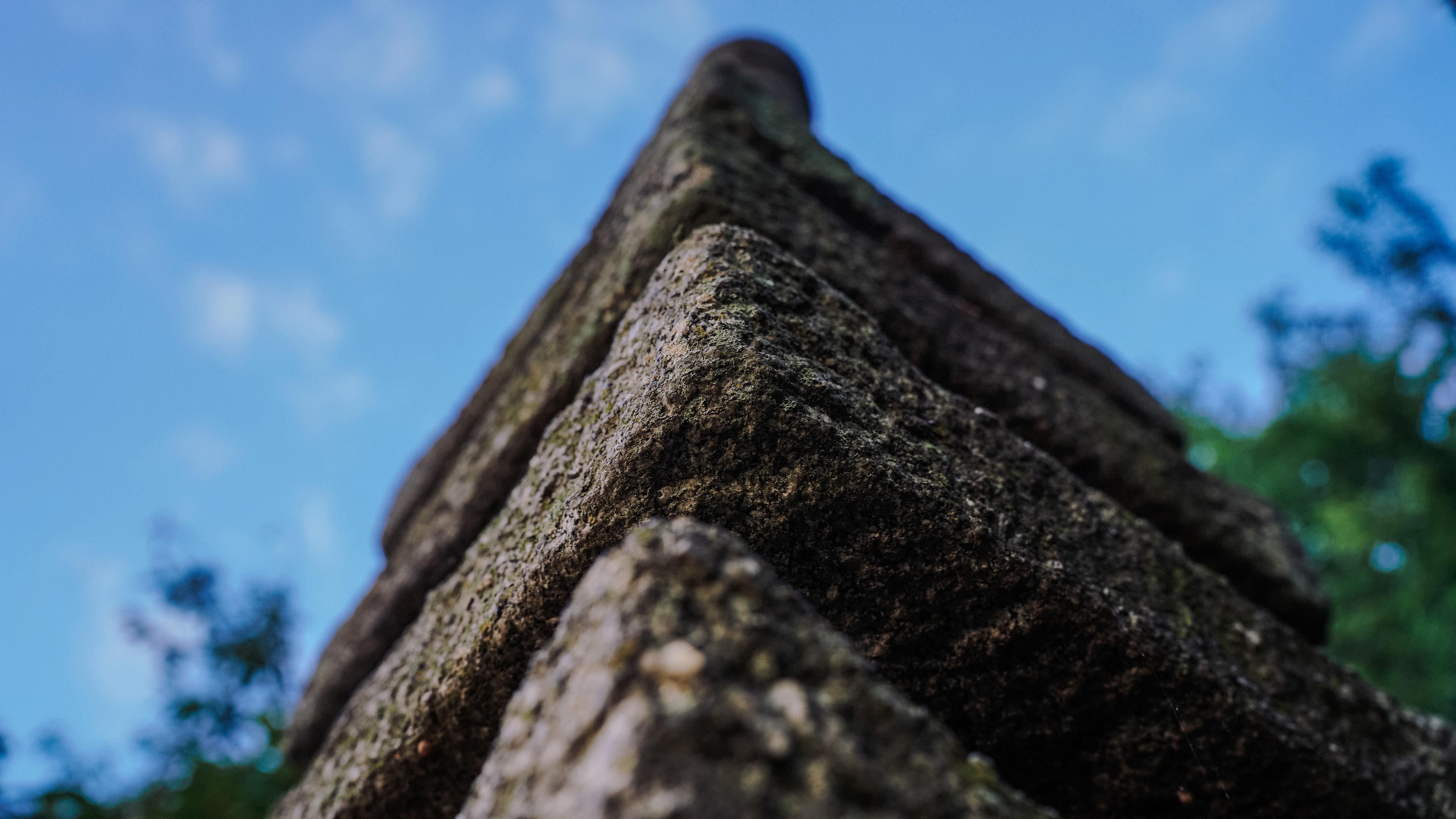
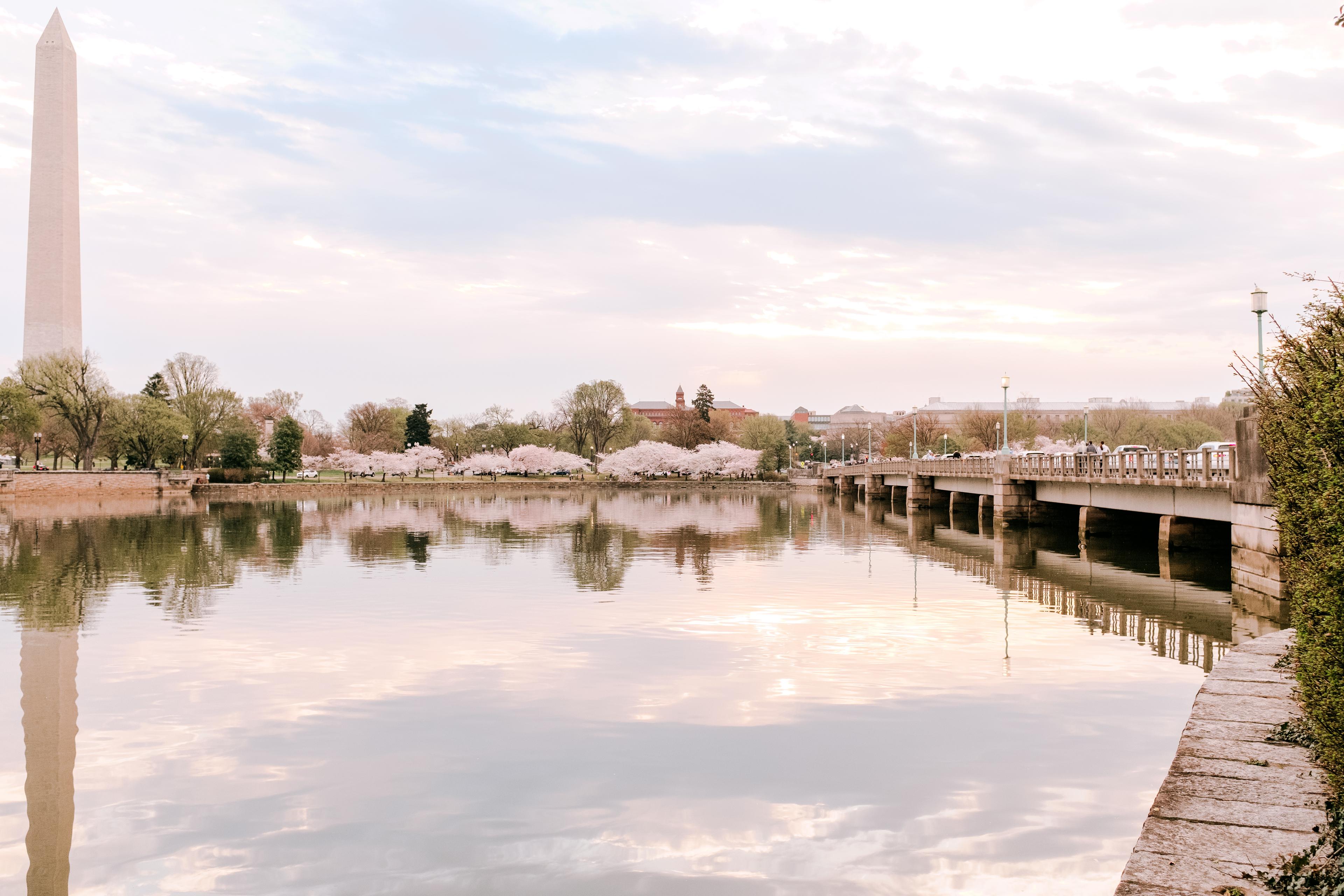
Tidal Basin
1501 Maine Ave SW, Washington, DC 20004
Amenities
- Wheelchair accessible
- Open 24 hours
- Restrooms — Available at the Memorials
- Paddle boats — Seasonal
- Food & drink — Retail options nearby
During the government shutdown, open-air Memorials will generally remain accessible to visitors. Restrooms, bookstores, gift shops, and information kiosk services may be suspended. For more information, please visit: doi.gov/shutdown.
There are several multi-year construction projects ongoing around the Tidal Basin. While visiting the Tidal Basin is not impacted, Ohio Drive SW and the Potomac Heritage Trail are closed for vehicle, bicycle, and pedestrian access between Independence Avenue SW and West Potomac Park Drive SW.
The Tidal Basin was constructed out of the Potomac River’s mudflats in the 1870s and was designed to harness the tidal ebb and flow to flush the Washington Channel and keep it navigable. The project began in 1875 under the direction of the Army Corps of Engineers and Major Peter Hains played a significant role in the dredging and reclamation efforts, which were completed in 1882.
The area around the Tidal Basin was developed into a public park in 1897, and it became a popular recreational area—officially opening as a recreational bathing beach on August 24, 1918, with a water carnival.
The Tidal Basin is probably most known for its iconic cherry blossoms. The first cherry trees were planted on March 27, 1912, by First Lady Helen Taft and Viscountess Iwa Chinda, the wife of the Japanese Ambassador. These trees were a gift from Japan to the United States, symbolizing friendship between the two nations.
The annual Cherry Blossom Festival, which began in 1935, celebrates the blooming of these trees and attracts massive crowds. The festival includes various events and activities, and each spring, the Japanese Embassy selects a Cherry Blossom Princess to light the Japanese stone lantern, marking the beginning of the festival.

Take a virtual stroll through this National Mall site
Videos
History
Timeline of events
The Long Bridge is constructed, occupying almost the exact position as the 14th Street Bridge today. It became so heavily used that Congress decided to build a second bridge, 75 feet downstream, with the area between the bridges becoming known as Potomac Flats.
Engineers propose to remove silt by dredging the Potomac River.
Civil engineer Alfred Landon Rives submits plans to reclaim 166 acres of mudflats near Long Bridge to make a park.
Work begins under Mr. T. Abert of the Army Corps of Engineers to dredge and deepen the river channel.
Major Hains of the Army Corps of Engineers completed the majority of the dredging and reclamation work. Two separate tracks of land were created; the southern area paralleled the old shoreline of the Potomac River and became known as East Potomac Park. This establishes the flow of water coming into the Tidal Basin from the Potomac through Inlet Bridge, and out into the Washington Channel through Outlet Bridge. The tip of East Potomac Park is now known as Hains Point.
Following the completion of the Washington Monument, engineers held some fears over the effects that the Babcock Lakes’ water had on the surrounding Monument grounds. As a precaution, the lakes and their fisheries were relocated to new ponds built on what is now the Tidal Basin. Additionally, the Fish Commission moved the aquarium to their headquarters in the old Armory Building, called Central Station, located near the current sites of the Dwight D. Eisenhower Memorial and the National Air and Space Museum.
The Tidal Basin is officially completed.
Flooding washes away numerous fish out of the nursery ponds, reportedly in the millions. Such events contributed to the expansion of the common carp as an invasive species in the waterways around the Mall and across the Chesapeake Bay.
Congress passes Bill No. 3,307, which established the area of the Tidal Basin and former Potomac Flats as a public park for scenic and recreational purposes.
Control of the park’s 31 acres is transferred to the Office of Public Buildings and Grounds.
The Tidal Basin hatching ponds are closed and filled in.
The first cherry trees are planted by First Lady Helen Taft and Iwa Chinda, wife of the Ambassador of Japan.
The first Cherry Blossom festival occurs.
With construction set to begin on the Jefferson Memorial imminently, a group of fifty women march on the White House, armed with a petition to stop damage to the cherry trees that were to be uprooted by memorial construction. The following day, the same women chained themselves to a tree at the construction site, aiming to stop the work. This became known as the "Cherry Tree Rebellion."
The groundbreaking of the Thomas Jefferson Memorial occurs.
The Thomas Jefferson Memorial is completed.
The Thomas Jefferson Memorial is formally dedicated on Jefferson’s 200th birthday.
The City of Tokyo gifts the Japanese Stone Lantern to the City of Washington, commemorating the centennial of the Treaty of Kanagawa which brought the end of Japan’s isolationist period in 1854.
The Mayor of Yokohama (second largest city in Japan and the site of Commodore Matthew Perry’s gunboat diplomacy and Treaty of Kanagawa) gifts the Japanese Pagoda to the City of Washington. It was dedicated a year later on April 18, 1958.
The groundbreaking of the Franklin Delano Roosevelt Memorial occurs.
The construction for the Franklin Delano Roosevelt Memorial begins.
The Franklin Delano Roosevelt Memorial is formally dedicated.
Ground is broken in the construction of the George Mason Memorial.
The George Mason Memorial is dedicated.
The Martin Luther King, Jr. Memorial groundbreaking occurs.
The Martin Luther King, Jr. Memorial is opened to the public.
The Martin Luther King, Jr. Memorial is formally dedicated.
Key Features
Reflection Questions
High school learners: Our nation’s past is complex and often provokes reflection, especially as we look to the future.
Here are a few questions to inspire deeper thinking:
- Why were the cherry trees around the Tidal Basin a gift from Japan, and what do they symbolize in terms of international diplomacy?
- How does the Tidal Basin help manage flooding in the surrounding area?
- What environmental challenges does the Tidal Basin face today, such as climate change or pollution?
Educational Activities
Other Resources
Interested in learning more? The following links will provide you with additional context and information:
- National Park Service: Tidal Basin
- National Park Service: Japanese Pagoda
- National Park Service: Japanese Stone Lantern
- National Park Service: Kutz Memorial Bridge
- National Park Service: Tidal Basin Seawall Rehabilitation
- National Park Service: Bloom Watch
- Trust for the National Mall: Bloom Cam
- Tidal Basin Ideas Lab
